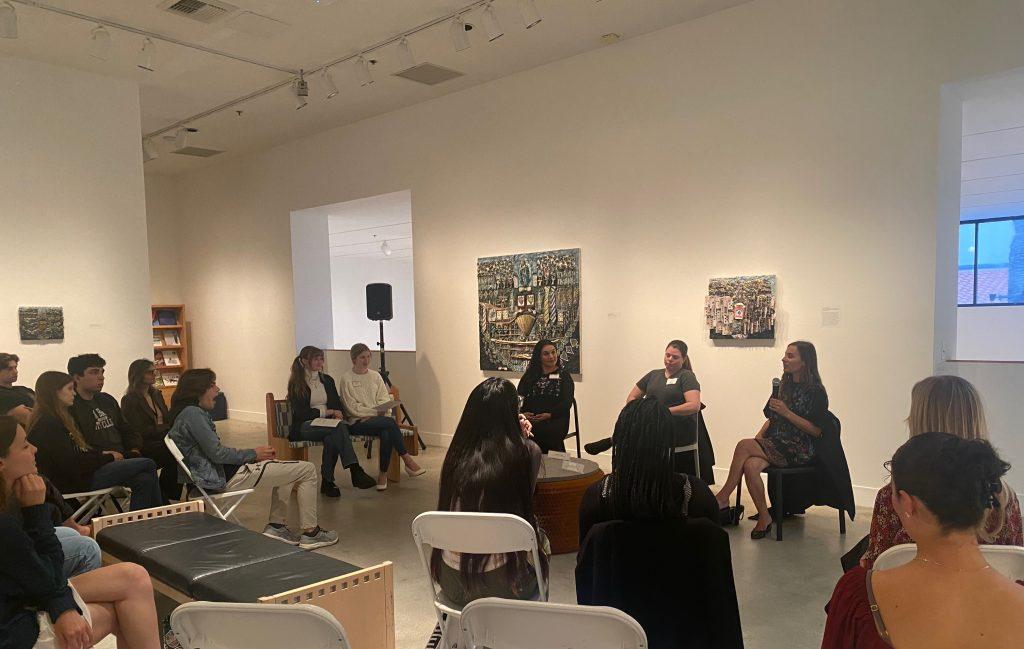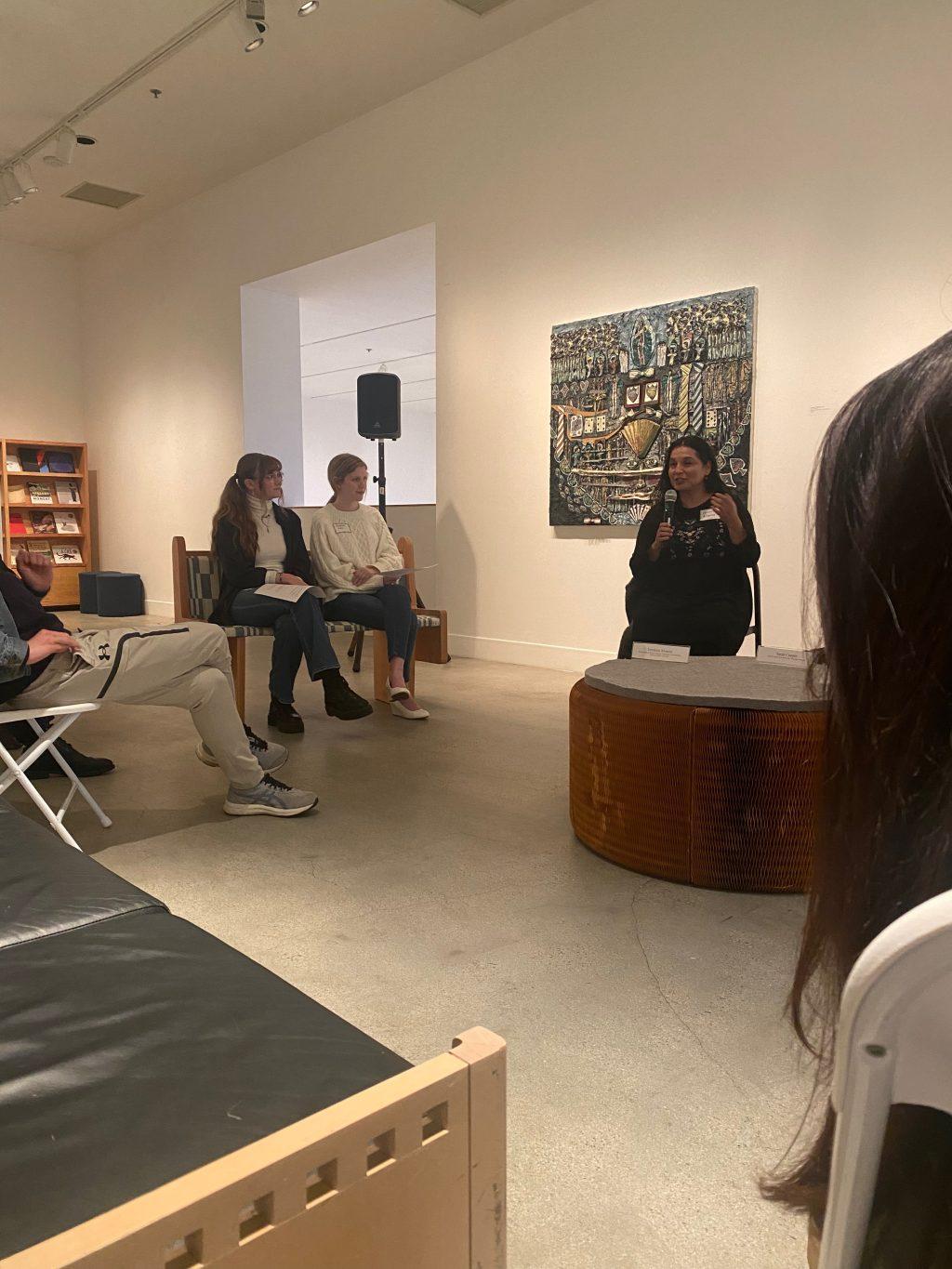
Many Art History students spent their Friday evening exploring potential career paths. An evening spent networking and picturing a future in Art History made for an enjoyable time, students said.
The Art History Student Society planned a career night on March 29, in the Weisman Museum. Students mingled over catered appetizers on the first floor and then gathered upstairs to hear three panelists share about their careers in art history.
“The Art History division hosts a career night once a year then hosts smaller events, sometimes with speakers for students to attend,” sophomore Linda Shi said.
Seniors Alexandria Coons and Elizabeth Astin, the president and co-president of the Art History Student Society, organized the panel, covering topics including such as career backgrounds, advice for the students and the controversy about marketing the arts through social media.
Panelist Sarah Cooper, public programs specialist at the Getty Center, said she organizes the performance program, where she works with artists to create sight-specific performances in different areas of the Getty Museum. The performances include dance, music or film, Cooper said.
“Performance and fluxus-style works of art were just as consequential to the narratives of art history as object-based work,” Cooper said. “The artists who created them [performances] were sharing community, and they should not be relegated to a lower hierarchy in institutions.”
Panelist Veronica Alvarez described her work in education of the arts and building fundraisers. In her work, she said she hires students to write a curriculum for schools across L.A. county that do not have programs in the arts.
“I do a lot of fundraising and providing jobs for university students,” Alvarez said.
Panelist and alumna Angela Robins (’02) said she serves as a director of Sargent’s Daughters West, a contemporary art gallery in L.A.

The panelists worked in a variety of different areas and demonstrated what a career with an Art History degree could look like from many angles.
“The curator has two responsibilities: One is to bring in art that challenges your region and expose people to all kinds of riveting art history they may not be exposed to,” Cooper said. “Their second challenge is to reflect their community.”
The panel ended with a question-and-answer session, and first-year Skylar Campbell asked Robins to talk more about her work with a non-profit. Robins said many factors go into building the infrastructure of a non-profit, which makes the experience lots of work but rewarding.
Panelists advised students to prepare for a career that requires lots of work and education but does not pay very high, Alvarez said.
Panelists said the ability to continue learning and explore different museums comes with great rewards.
Many of the students in the art history community have a deep passion for art. Shi said she chose her major because her favorite pastimes growing up were painting, looking at art and spending hours at museums.
“I chose my major of art history because I just really like learning what prompts an artist to make their piece look the way it does,” Campbell said.
___________________
Follow the Graphic on X: @PeppGraphic
Contact Samantha Wareing via email: samantha.wareing@pepperdine.edu or by Instagram: @samanthawareing

